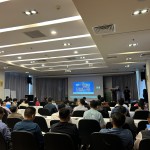Total number of posts 461.

The importance of RCEP to the textile and apparel and accessory industry (T&A)
According to statistics from the United Nations, in 2019, 15 RCEP members exported all T&A worth 374 billion USD (50% of the world market share) and imported 139 billion USD (20% of the world market share).
In particular, RCEP members act as an important apparel supply base for many US and EU fashion brands. For example, in 2019, nearly 60% of the US apparel imports came from RCEP members; Apparel imports from the EU also increased from 45% compared to 2005.
Notably, RCEP members have been developing and forming the textile and garment supply chain in the region. RCEP members with more advanced economies (such as Japan, South Korea, and China) supply textile and garment materials to less developed economies in the region in this regional supply chain.
To reflect the increasingly integrated regional supply chain, in 2019, 72.8% of textile and apparel imports by RCEP members came from other RCEP members, a significant increase from only 57.6% in 2005. Almost 40% of textiles exported by RCEP members also went to other RCEP members in 2019, up from 31.9% in 2005.
Key provisions in RCEP relating to textiles
1. Commitment to reduce the tax rate to zero for most textiles and garments traded between RCEP members on the first day after the agreement comes into force. However, the detailed tariff elimination roadmap for textiles and garments under RCEP is very complicated. Each RCEP member sets its own tariff elimination schedule, which can last more than 20 years (i.e., 34 years for South Korea and 21 years for Japan.)
RCEP has specific tariff elimination schedules between member countries. Companies interested in taking advantage of tax-free benefits under RCEP need to study the “rules of the game” in detail. For example, Korea sets different tariff elimination schedules for textile products from ASEAN, China, Australia, Japan, and New Zealand. Japan's tariff cuts on apparel products are more extensive for ASEAN members and less so for China and South Korea.
2. A flexible and varied application of rules of origin to apparel products, requiring only that all non-originating materials used in the production of the good undergo a tariff transition at the code level HS 2 digits (assuming change from any chapter from chapter 50-60 to chapter 61). In other words, RCEP members are allowed to source yarn and fabrics from anywhere in the world, and the finished garment products are still eligible for duty-free benefits. Most garment factories in RCEP member countries can immediately enjoy RCEP benefits without adjusting their existing supply chains.
Potential economic impacts of RCEP on the textile industry
1. Strengthen the textile and apparel supply chain in the region among RCEP members. RCEP will also expand ASEAN's role as the leading apparel producer in the region.
2. The possibility of making it more difficult for non-participating members of the textile and apparel supply chain in the region is formed by RCEP members. Since the entire textile and apparel supply chain in the region already exists among RCEP members, plus the speed factor of market access, there is little incentive for RCEP members to partner with suppliers. outside the region in the production of textiles.
3. Difficulty in competition for textile manufacturers who are not members of the agreement when RCEP removes tariffs. Not surprisingly, according to a recent study, by value, only about 21.5% of textile and apparel imports by RCEP members will come from outside the region following the implementation of the agreement, reducing compared to 29.9% of the base year in 2015.
4. Accelerate the negotiation of other trade agreements in the Asia-Pacific region, such as the China-Korea-Japan Free Trade Agreement. Pressure is growing on the Biden administration to strengthen America's economic ties with countries in the Asia-Pacific region. Economic competition between the US and China in the region could also intensify as the combined effects of RCEP and CPTPP begin to form new supply chains and examine the two countries' impact on regional trade patterns.
Source: Công Thương News














